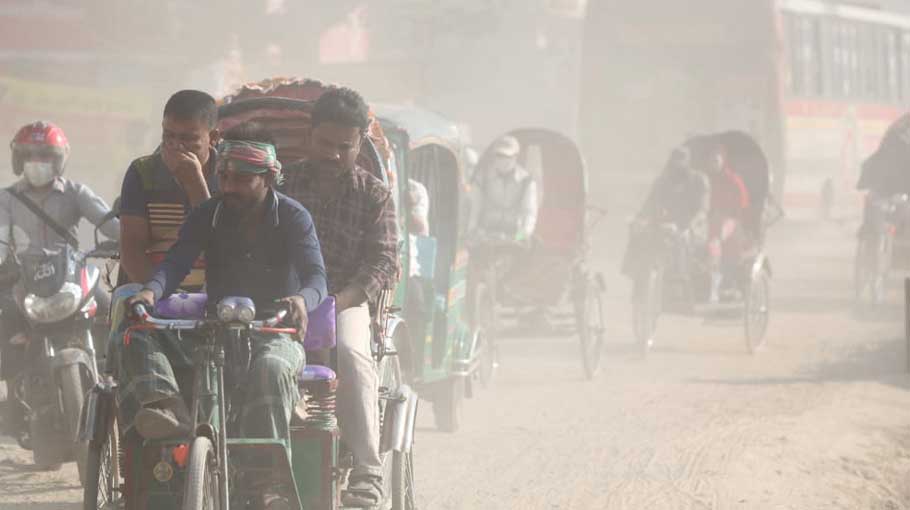Air pollution Dhaka’s scourge

The air pollution still remains one of the topmost challenges for Dhaka city as well Bangladesh ahead of the monsoons although air pollution decreases in the city with the onset of the monsoons.
The presence of dust and other particles in the air of Dhaka still remains abnormally, leaving the city among the worst cities in the world in terms of air quality.
The capital city has been ranked as the fourth most polluted city in the world. Dhaka’s air quality index (AQI) was recorded at 161 at 8:41 am on Saturday (June 11).
Santiago of Chile, Delhi of India and Kuwait City of Kuwait occupied the first three spots with AQI scores of 177, 166 and 161 respectively. Meanwhile, Dhaka suffers from worst air pollution after midnight as the pollution reaches its highest at about 2:00 am and continues till 8:00 am.
“We found that Dhaka suffers the worst with air pollution between 2:00 am and 8:00 am,” said Prof Dr Ahmad Kamruzzaman Majumder, who has been monitoring the air pollution situation in Bangladesh for several years.
Talking to Bangladesh Post on Saturday, Prof Kamruzzaman Majumder, chairman of Environmental Science department at Stamford University Bangladesh and director of Center for Atmospheric Pollution Studies (CAPS), said that after sunset, the airflow decreases and humidity increases. For this reason, the floating dust is trapped in the air and highest pollution is recorded at about 2:00 am.
Another reason is that after midnight an abundance of vehicles start entering the capital from outside Dhaka with construction materials, which are transported without any cover or precautions.
The expert on sound and air pollution said that when Dhaka’s air quality index (AQI) is at least recorded, it also remains unhealthy as the lowest pollution is also abnormal pollution in the city.
An AQI between 101 and 200 is considered ‘unhealthy’, particularly for sensitive groups.
Similarly, an AQI between 201 and 300 is said to be ‘poor’, while a reading of 301 to 400 is considered ‘hazardous’, posing serious health risks to people.
AQI, an index for reporting daily air quality, is used by government agencies to inform people how clean or polluted the air of a certain city is, and what associated health effects might be a concern for them.
In Bangladesh, the AQI is based on five criteria pollutants -- Particulate Matter (PM10 and PM2.5), NO2, CO, SO2 and Ozone.
Dhaka has long been grappling with air pollution issues. Its air quality usually turns unhealthy during winter and improves during monsoon. Although the monsoon is close at hand, the city’s air quality is still unhealthy.
Air pollution consistently ranks among the top risk factors for death in Bangladesh and worldwide. However, the air pollution-related deaths and diseases are on the rise in recent years in Bangladesh.
Massive discharge of pollutant particles from construction work, rundown roads, brick kilns, fumes from vehicles, absence of proper management system, lack of coordination among government agencies and lax monitoring are mainly responsible for the air pollution in Dhaka city.



